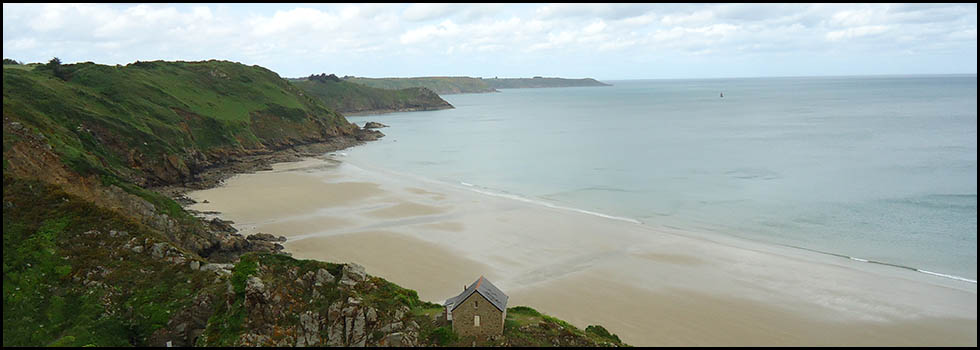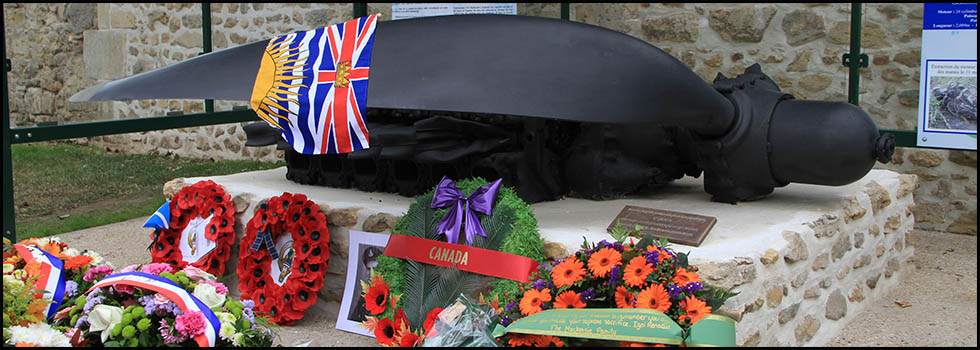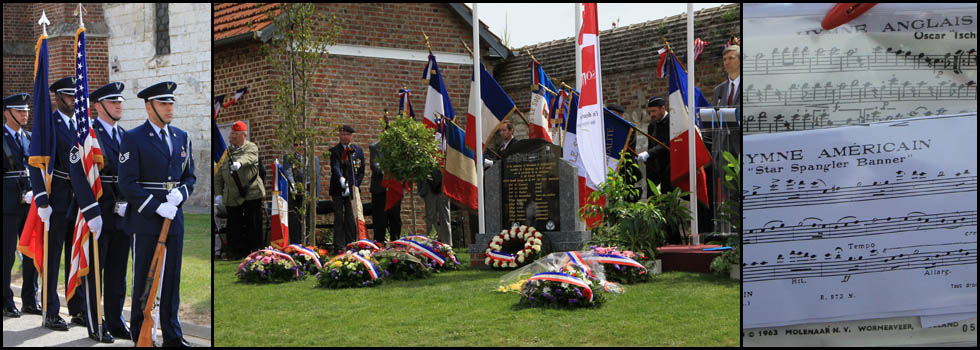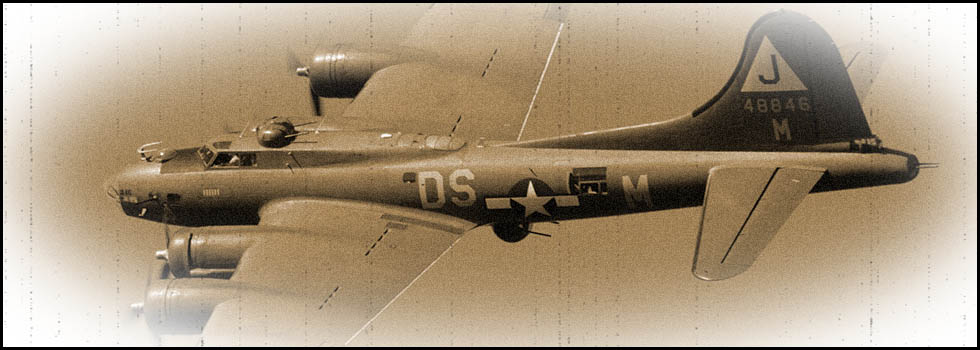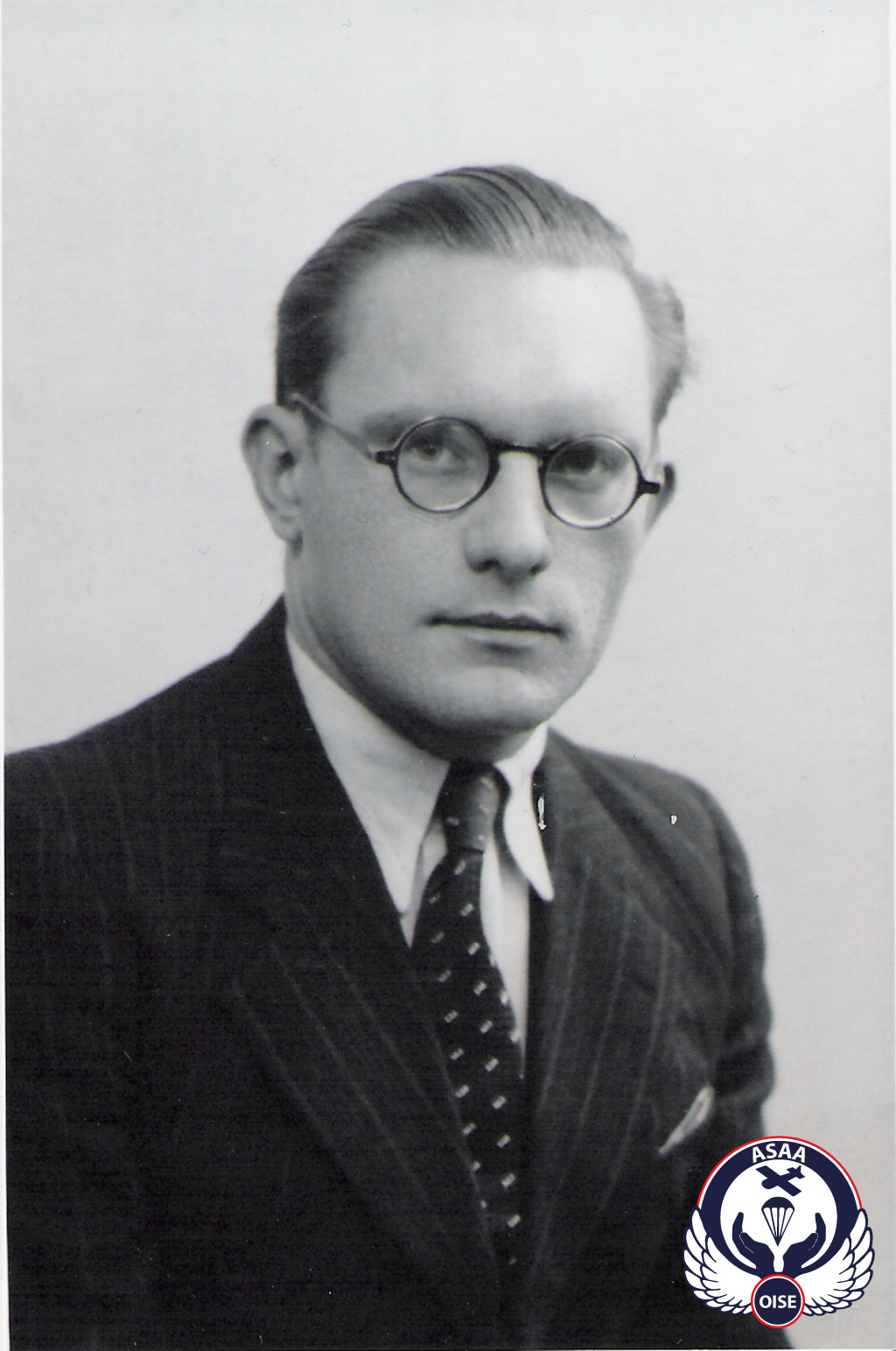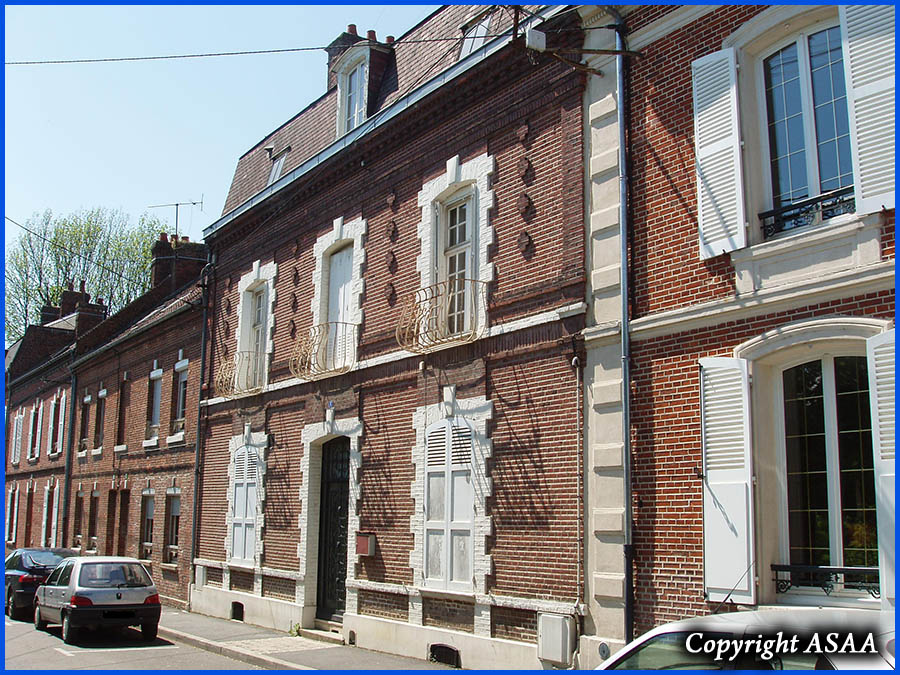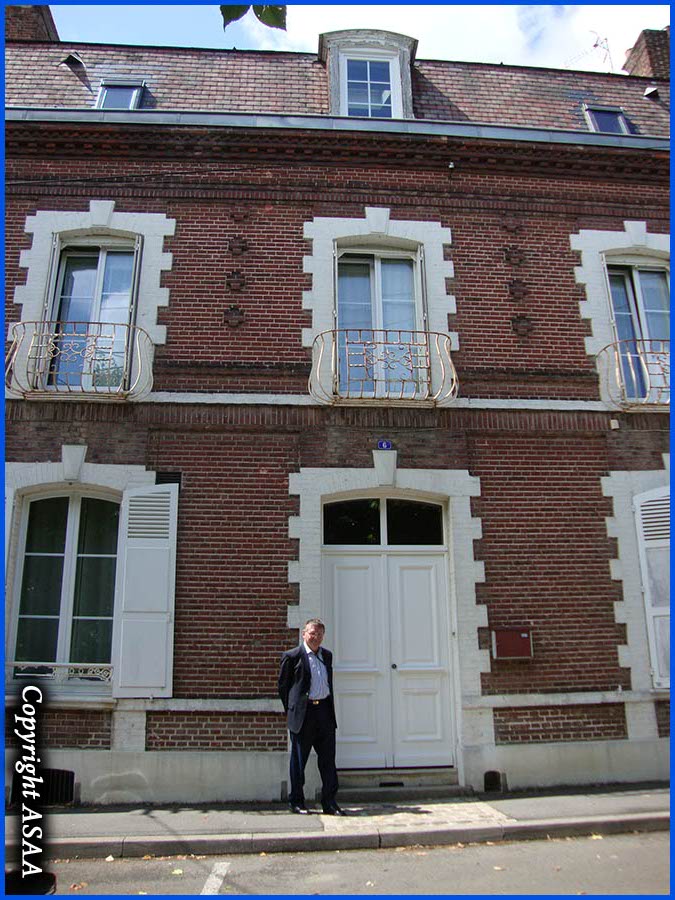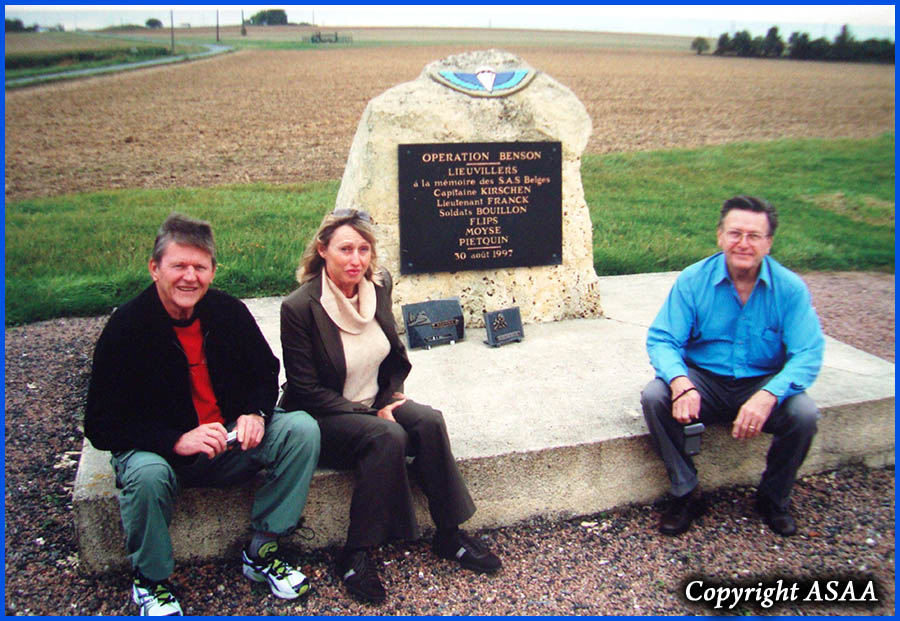Dr. Edmond CAILLARD
Edmond Caillard was born on 5th April 1912 in Noumea, New Caledonia.
In his teens, he studied at the College La Perouse in Noumea then went to France to continue his studies. After his military service at Toulon in 1934, he entered the Faculty of Medicine.
He graduated in colonial medicine in May 1939.
On 26th August 1939, he was mobilised into the 24th Colonial Infantry Regiment as a doctor.
In April 1940, he married Suzanne Mangeol, a native of Plombières in the Vosges.Four children were born successively in 1941, 1943, 1944 and 1948.
Promoted to lieutenant in May 1940, the regiment participated in the battles of May-June 1940 in the Somme. During the defeat, Edmond Caillard was taken prisoner by the Germans but managed to escape. He was demobilized at the end of August 1940.
His friend, Dr. Lachèze, did not wish to return to the occupied zone and so practiced in Saint Just-en-Chaussée. From 1941, Dr. Edmond Caillard resumed his surgery located in the boulevard Valentin Haüy.
From 1943, the bombing raids against the enemy intensified. Many formations of Allied aircraft flew over the area daily, day and night, flying to the Reich. Harassed by German or caught in the fire of anti-aircraft guns, the bombers suffered losses and fell in the region. Many airmen who managed to bale out were collected by the local population.
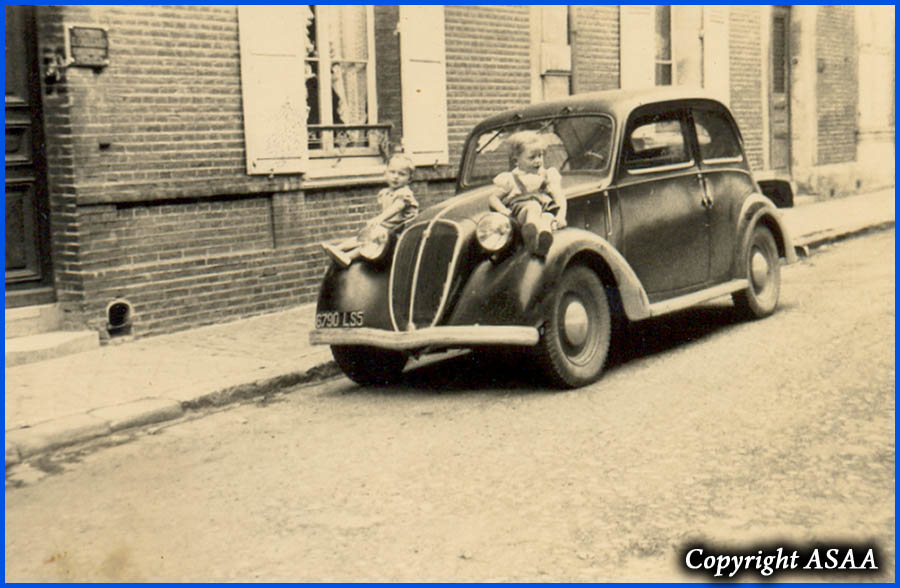 Around Saint Just-en-Chaussée, Dr. Caillard was often asked to come and care for the wounded airmen. Aboard his Simca 8 and with an authorisation to circulate, he scoured the area day and night, carrying and provisionally allocating the airmen to patriots and trusted families until they could reach the organised escape routes. The most seriously injured were taken to hospitals, especially to Creil, arranged by Dr. Debray.
Around Saint Just-en-Chaussée, Dr. Caillard was often asked to come and care for the wounded airmen. Aboard his Simca 8 and with an authorisation to circulate, he scoured the area day and night, carrying and provisionally allocating the airmen to patriots and trusted families until they could reach the organised escape routes. The most seriously injured were taken to hospitals, especially to Creil, arranged by Dr. Debray.
Repeatedly, with the complicity of his wife, he housed airmen, providing them with civilian clothes.
Dr. Caillard was arrested once with an airman in uniform in his car. The Germans were so happy to capture the unfortunate airman that they let Dr. Caillard go free. His status as doctor allowed him to have the chance to get away.
On the night of 27th to 28th August 1944, having departed from the Fairford camp, England, six Franco-Belgian Special Air Service (SAS) commandos parachuted in the area of Saint Just-en-Chaussée. The "Benson" operation, commanded by Captain Kirschen, was intended to inform the SHAEF (Supreme Headquarters of the Allied Expeditionary Force) about the withdrawal of German troops to the Somme and Northern France as well as to pinpoint enemy anti-aircraft batteries. Due to a storm, F/O Davidson, the Australian Stirling pilot, had dropped the six SAS men about 10 km west of the agreed place by mistake. Four were slightly wounded on landing. Near Valescourt they hid in a thicket until the evening of 28th before being led by a resistant worker to a barn at the La Folie farm where they hid in a cellar.
 The next day, Dr. Caillard who had been notified, arrived on a motorcycle and treated the wounded. Captain Kirschen explained to him the purpose of their mission. To the surprise of the members of the SAS, the doctor took from his pocket an extraordinary document : a statement of the positions of all German Divisions on the Somme.
The next day, Dr. Caillard who had been notified, arrived on a motorcycle and treated the wounded. Captain Kirschen explained to him the purpose of their mission. To the surprise of the members of the SAS, the doctor took from his pocket an extraordinary document : a statement of the positions of all German Divisions on the Somme.
The day before, at the intersection of Saint Just-en-Chaussée, Dr. Caillard had observed a German commander who directed military traffic using a map. Thirsty, the commander had entered a cafe and had put his map on a table. Taking advantage of his inattention, Dr. Caillard was able to copy it on a small sheet of paper.
The information of the utmost importance for the continuation of the conflict were passed on the very same day to London by coded message.
On 31st August 1944, the town of Saint Just-en-Chaussée was liberated by the Allied Armies.
Dr. Caillard came to the aid of about 87 Allied airmen, mostly Americans, in the region of Saint-Just-en-Chaussée.
After the Liberation, Dr. Caillard became first deputy to the mayor Dr. Delignon. He held this position from October 1944 to August 1946.
In November 1946, the maritime links being restored, Dr. Caillard and his family decided to return to New Caledonia.
In 1947, at Noumea, he contributed with three other doctors, to the founding of the Anse Vata Polyclinic, installed in the prefabricated buildings of a former hospital built by the Americans during the Pacific War.
He entered politics and was elected to include the Territorial Assembly of New Caledonia from 1957 to 1962. In 1967, he ceased his political activities, continuing his consultations at his office or at the Polyclinic which he continued to administer.
Dr. Caillard had also a passion for astronomy. In the late 50s, he had built an observatory on his own property.
Dr. Edmond Caillard died on 16th June 1991 in Noumea at the age of 79.
Saint Just-en-Chaussée - Boulevard Valentin Haüy - Dr. Caillard's house
A street was named after him in the town of Mont-Dore (New Caledonia) where he lived.
Dr. Edmond Caillard was awarded many American, British and French decorations :
Sources : Dr. Caillard’s family
: "Six amis viendront ce soir" de Gilbert-Sadi Kirschen - 1946 (Nicholson & Watson)

